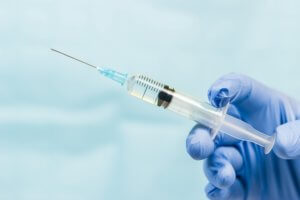12 Sep The Bloody History of Medical Needles
The medical needle, a tool often taken for granted, has a rich history that is as pointed as its tip. This article teaches the evolution and history of medical needles from their simple origins to the smart tools used today. We also highlight their critical role in advancing healthcare and the importance of their ongoing development.
The Early History of Syringes: The Beginning of Medical Needles
The history of medical needles goes back to ancient times. In the Indus Valley Civilization (3300–1300 BCE), early needles made of bone and metal were used for sewing and basic surgeries. This marked the beginning of the connection between needles and medicine, though they were much simpler than today’s tools.
In ancient Greece and Rome, the idea of syringes started to form. Hollow reeds were used in rituals and simple medical practices. These reeds were the first syringes. By the second century CE, Galen described early piston syringes, used mainly for applying ointments. This paved the way for more advanced syringes in the future.
The Middle Ages
During the Middle Ages, between war and plague, medical practices evolved. Needles of this era were often made of bronze or iron. They were used in bloodletting. This was a common medical practice of the time. Bloodletting was believed to cure or prevent illness by balancing the body’s humors, a concept that dominated medical thinking for centuries. However, these needles were not yet fine or sharp enough for more delicate medical procedures.
These early medical needles were blunt instruments, literally and figuratively. They reflected the limited understanding of medical science during the Middle Ages. Yet, they were an essential part of the medical toolkit. Their use persisted throughout this period, setting the stage for future advancements.
The Renaissance
The Renaissance brought a surge in scientific and medical innovation. Ambroise Paré, a French doctor in the 16th century, improved the way surgery was done. Most notably, he used finer, more precise needles for stitching wounds. This period saw the first steps towards tools that look like those used today.
This period also saw the development of more sophisticated syringes. Pascal’s work in hydraulics in the 17th century led to the creation of a syringe that could infuse medicines, a significant leap forward in medical technology. This innovation paved the way for syringes to be used for more than just applying ointments or extracting fluids. It allows for future advancements in therapeutic uses.
19th Century
A major leap in needle design occurred in the 19th century with the hypodermic needle. In 1853, Alexander Wood and Charles Pravaz each developed hollow needles on their own. Each doctor’s needle was fine enough to pierce the skin and deliver substances directly into the bloodstream. This invention changed medicine to pave the way for developing vaccinations and injectable medications.
The basic design of the hypodermic needle with its hollow tube and sharp point, has remained largely unchanged since its invention. This breakthrough revolutionized medicine and made it possible to administer precise doses of medications and vaccines with unprecedented accuracy.
20th Century
In the 20th century, needle technology improved greatly. Stainless steel replaced older materials. This change made needles sharper and more durable. During World War II, mass production made disposable, sterile needles widely available to reduce the risk of infection.
As production methods advanced, needles and syringes became more accessible and common in healthcare. Standardizing needle sizes made it easier for doctors to choose the right one for each procedure. Plastic syringes were also introduced. These were lighter, cheaper, and easier to make than glass or metal ones.
In The 21st Century and Beyond
Today, medical needles are still progressing. New developments like painless microneedles and smart needles with sensors improve accuracy and reduce pain. These advancements show how important needles are in healthcare.
Microneedles are used for vaccines and insulin. They make injections nearly painless, helping those who fear needles. However, they can’t yet deliver intravenous or bolus injections, so traditional needles will still be essential for many procedures.
Needles are also important in surgeries involving catheters, where precision is key. As medical technology advances, so will the needles and syringes used in these procedures.
The Importance of Understanding the History of Syringes and Medical Needles
Understanding the history of syringes and medical needles is essential for appreciating the advancements that have shaped modern medicine. From the rudimentary tools of ancient civilizations to the sophisticated devices of today, the evolution of medical needles reflects the broader progress of healthcare.
Each advancement in needle technology has marked a significant leap in our ability to diagnose, treat, and prevent disease. Ultimately, it has improved patient outcomes and saved countless lives.
This history also highlights the importance of continued innovation in medical tools. As we look to the future, the development of new needle technologies is important in addressing emerging healthcare challenges. Whether through the creation of more precise surgical instruments or the development of painless injection methods, the development of medical needles will continue to be a vital part of the story of medicine.
The history of medical needles is a fascinating journey from basic tools to high-tech instruments. Each advancement has marked a huge leap in healthcare, showing how even the smallest tools can have a big impact. As technology continues to get better, the evolution of medical needles promises to play an important role in the future of medicine.
As you train with us at Phlebotomy Training Specialists, you’ll gain hands-on experience with the latest needle technologies. You will learn not only how to perform procedures with precision but also how to care for your patients with the utmost professionalism. We are committed to providing the highest caliber training to make sure that you are well-prepared to enter the workforce and make a meaningful impact in the medical field.

